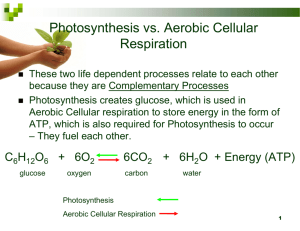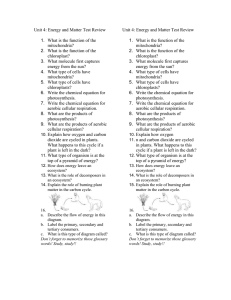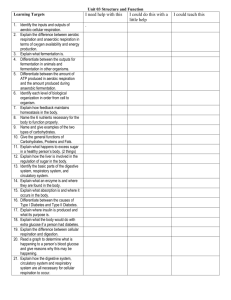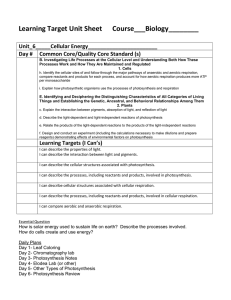Photosynthesis & Cellular Respiration Worksheet
advertisement
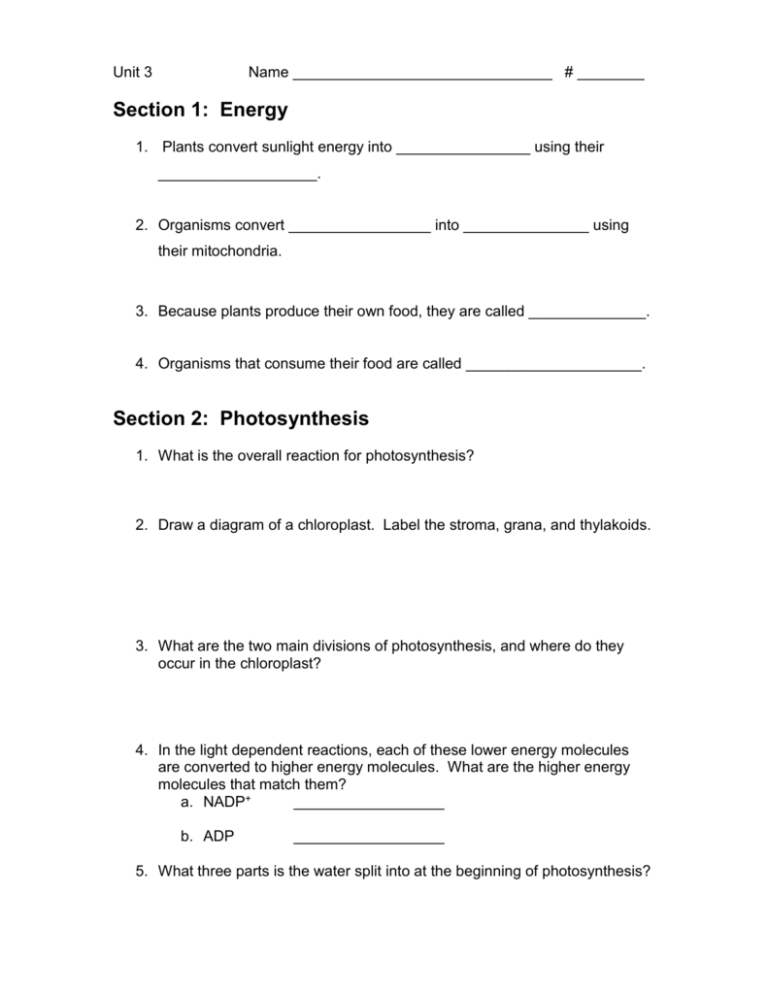
Unit 3 Name _______________________________ # ________ Section 1: Energy 1. Plants convert sunlight energy into ________________ using their ___________________. 2. Organisms convert _________________ into _______________ using their mitochondria. 3. Because plants produce their own food, they are called ______________. 4. Organisms that consume their food are called _____________________. Section 2: Photosynthesis 1. What is the overall reaction for photosynthesis? 2. Draw a diagram of a chloroplast. Label the stroma, grana, and thylakoids. 3. What are the two main divisions of photosynthesis, and where do they occur in the chloroplast? 4. In the light dependent reactions, each of these lower energy molecules are converted to higher energy molecules. What are the higher energy molecules that match them? a. NADP+ __________________ b. ADP __________________ 5. What three parts is the water split into at the beginning of photosynthesis? 6. High energy electrons are transferred from one membrane protein to the next in the thylakoid membrane during the light dependent reactions. What is this process called? 7. What happens to H+ ions during the light dependent reactions? (Be specific.) 8. What enzyme makes ATP, and how does it get the energy to make it? 9. Go back to the chemical equation that you wrote in number 1. Underline in blue any reactants or products that are associated with the light dependent reactions. 10. What is another name for the light independent reactions? 11. Go back to the chemical equation that you wrote in number 1. Underline in red any reactants or products that are associated with the light independent reactions. Section 3: Cellular Respiration 1. What is the overall reaction for cellular respiration? 2. Draw a diagram of the mitochondria. Label the outer membrane, inner membrane, cristae, and matrix. 3. Answer the following questions about the first step of cellular respiration. a. Name d. Ending Carbon Molecule b. Location in cell e. Energy Products Made (Net) c. Beginning Reactant f. Aerobic or Anaerobic 4. Answer the following questions about the second step of cellular respiration. a. Name d. Ending Carbon Molecule b. Location in cell e. Energy Products Made (Net) c. Beginning Reactant f. Aerobic or Anaerobic 5. Answer the following questions about the third step of cellular respiration. a. Name b. Location in cell c. Energy Products Made (Net) d. Aerobic or Anaerobic 6. What is the name of the process that occurs after glycolysis when no oxygen is available in the cell? 7. What are the two types of fermentation, and which do humans perform? 8. Why is fermentation necessary, but not desirable for a cell?







